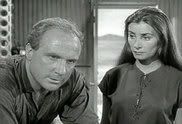Pleo: The New Robotic "Designer Life Form"
 The next big “must-have” toy this year, may be in the form of a one-week old baby Camarasaurus. One of the co-creators of Furby, Caleb Chung, is putting the finishing touches on a new animatronic dinosaur called Pleo. Eight years ago the Furby doll was all the rage, with sales of over 40 million units. Chung’s Emeryville, California-based start-up, Ugobe (a play on words meaning You Go Become), will be manufacturing Pleo, which is scheduled to hit retail shelves in Q3 2006 just in time for the holidays. 49-year-old Chung, dubbed a ‘modern Gepetto’ by Wired magazine, chooses to design toys in isolation at his Boise, Idaho home, away from the rest of his Bay Area staff. He envisions Pleo as more than just another robotic toy. The main objective of Pleo is to create an emotional attachment with its owner. Ugobe reps say that if you play with it long enough, Pleo will learn just like a dog, cat or small child. Pleo moves just like you'd expect a baby dinosaur to move, and not a robot (although who really knows how a baby dinosaur moved?). If you think that Furby was ‘smart’, you’ll be impressed (or creeped out) when you hear that Pleo will have seven computer brains that control 14 servos and 38 sensors compared to Furby’s two computer brains. This is a quantum leap from the Artificial Intelligence implemented in toys like Furby and Sony's ill-fated, Aibo robot dog. Pleo is the first of a line of “designer life forms” that Chung and Ugobe plan to create that combine the latest in artificial intelligence, robotics, mechanical engineering and toy design. Pleo will have ”neural network'' software -- a program that behaves in a brain-like way as it processes many pieces of information to determine its actions. Another interesting note: Pleo does not have an on/off switch.
The next big “must-have” toy this year, may be in the form of a one-week old baby Camarasaurus. One of the co-creators of Furby, Caleb Chung, is putting the finishing touches on a new animatronic dinosaur called Pleo. Eight years ago the Furby doll was all the rage, with sales of over 40 million units. Chung’s Emeryville, California-based start-up, Ugobe (a play on words meaning You Go Become), will be manufacturing Pleo, which is scheduled to hit retail shelves in Q3 2006 just in time for the holidays. 49-year-old Chung, dubbed a ‘modern Gepetto’ by Wired magazine, chooses to design toys in isolation at his Boise, Idaho home, away from the rest of his Bay Area staff. He envisions Pleo as more than just another robotic toy. The main objective of Pleo is to create an emotional attachment with its owner. Ugobe reps say that if you play with it long enough, Pleo will learn just like a dog, cat or small child. Pleo moves just like you'd expect a baby dinosaur to move, and not a robot (although who really knows how a baby dinosaur moved?). If you think that Furby was ‘smart’, you’ll be impressed (or creeped out) when you hear that Pleo will have seven computer brains that control 14 servos and 38 sensors compared to Furby’s two computer brains. This is a quantum leap from the Artificial Intelligence implemented in toys like Furby and Sony's ill-fated, Aibo robot dog. Pleo is the first of a line of “designer life forms” that Chung and Ugobe plan to create that combine the latest in artificial intelligence, robotics, mechanical engineering and toy design. Pleo will have ”neural network'' software -- a program that behaves in a brain-like way as it processes many pieces of information to determine its actions. Another interesting note: Pleo does not have an on/off switch. All of this cutting-edge technology packed into a 20-inch, Jurassic dinosaur toy seems a great new line of toys or the start of something pretty disturbing. First it’s robotic dinosaurs, what next? The next logical step in the progression of this technology will probably be humanoid “designer life forms.” The main objective of creating an emotional attachment between owner and robot, reminds me of the Twilight Zone episode called “The Lonely.” In this particular episode set in
 the future, Jack Warden stars as Corry, a criminal from the future, who has been sentenced to solitary confinement for fifty years on a penal asteroid (he has the whole barren asteroid to himself). The captain of a passing freighter, who sympathizes with him, leaves him a box containing a female robot named Alicia (played by Jean Marsh). Warden doesn't take to her at first, but soon he grows very fond of her, and eventually falls in love with her (they only showed him playing checkers and eating dinner with her, but do the math). After a few months go by, the captain of the freighter returns bearing good news: Warden's been pardoned and is free to leave. However, weight restrictions do not permit him to take Alicia with him. Warden doesn't want to leave her, because he feels that she really is a woman. The captain takes out a gun and blows Alicia's face off, pointing out to Warden that all he's leaving behind is loneliness. This Twilight Zone episode is an extreme example of the emotional dynamic that can possibly transpire between people and machines. As the level of complexity and sophistication of robots increases, forming emotional attachments to them will be come easier. Breaking those attachments will become more difficult because robots will be perceived as being “alive” in some small way.
the future, Jack Warden stars as Corry, a criminal from the future, who has been sentenced to solitary confinement for fifty years on a penal asteroid (he has the whole barren asteroid to himself). The captain of a passing freighter, who sympathizes with him, leaves him a box containing a female robot named Alicia (played by Jean Marsh). Warden doesn't take to her at first, but soon he grows very fond of her, and eventually falls in love with her (they only showed him playing checkers and eating dinner with her, but do the math). After a few months go by, the captain of the freighter returns bearing good news: Warden's been pardoned and is free to leave. However, weight restrictions do not permit him to take Alicia with him. Warden doesn't want to leave her, because he feels that she really is a woman. The captain takes out a gun and blows Alicia's face off, pointing out to Warden that all he's leaving behind is loneliness. This Twilight Zone episode is an extreme example of the emotional dynamic that can possibly transpire between people and machines. As the level of complexity and sophistication of robots increases, forming emotional attachments to them will be come easier. Breaking those attachments will become more difficult because robots will be perceived as being “alive” in some small way. Think about it. What IS the exit strategy to emotionally detach owners from their Pleos? Taking a page from the Twilight Zone book of solutions, there just may be a market for a 5 kg, Cretaceous Period, asteroid to put these pesky little Pleos down realistically… a new, functional, 21st Century version of the Pet Rock. It’s just a thought. Pleo will sport SD memory expansion and will set you back a mere $200.
For more information visit: Ugobe.com





 programming using an interpreted scripting language called
programming using an interpreted scripting language called  The 88 pull out all of the stops on their latest CD, Over and Over. They gratuitously dig into the universal Pop collective, showing influences from the late 1960’s to contemporary fair. From my first listen to Over and Over, I could tell that the 88 had all of the prerequisites for a great Pop band. Every song seems meticulously constructed to meet Pop standards. There are great melodies, and flawless vocals and harmonies on every track. The first track, “Hide Another Mistake,” is an instantly gratifying, upbeat tune that begins with a tight guitar and drum intro, speckled with a few bass guitar glissandos for good measure. The Marc Bolan-ish (ala T-Rex) vocals play like an finely-tuned instrument, complementing the rhythmic backdrop. After this song finished playing, I immediately checked to see if lead vocalist, Keith Slettedahl was born on September 16, 1977, the same day that Marc Bolan died. Slettedahl’s vocal style on Over and Over has got to be more than coincidence. “All ‘Cause of You” is a mid-tempo, bouncing ballad that has equal parts Rock, swoon, and jangle. I can imagine that the live version of this tune is a killer crowd pleaser, especially with the ladies. A quick glance into the audience in the direction of a group of receptive ladies at the right time during the opening verses…
The 88 pull out all of the stops on their latest CD, Over and Over. They gratuitously dig into the universal Pop collective, showing influences from the late 1960’s to contemporary fair. From my first listen to Over and Over, I could tell that the 88 had all of the prerequisites for a great Pop band. Every song seems meticulously constructed to meet Pop standards. There are great melodies, and flawless vocals and harmonies on every track. The first track, “Hide Another Mistake,” is an instantly gratifying, upbeat tune that begins with a tight guitar and drum intro, speckled with a few bass guitar glissandos for good measure. The Marc Bolan-ish (ala T-Rex) vocals play like an finely-tuned instrument, complementing the rhythmic backdrop. After this song finished playing, I immediately checked to see if lead vocalist, Keith Slettedahl was born on September 16, 1977, the same day that Marc Bolan died. Slettedahl’s vocal style on Over and Over has got to be more than coincidence. “All ‘Cause of You” is a mid-tempo, bouncing ballad that has equal parts Rock, swoon, and jangle. I can imagine that the live version of this tune is a killer crowd pleaser, especially with the ladies. A quick glance into the audience in the direction of a group of receptive ladies at the right time during the opening verses… use the same formula for some of the songs (e.g. “All ‘Cause of You” and “Coming Home”), Over and Over track for track, is a consistently good, enjoyable album. To their credit, The 88, know the value of live performance and touring to build street credibility. I give them extra “cool points” because they acted as Elliott Smith’s back up band for a live performance of “Can’t Make a Sound” and because they wear suits and ties. You gotta give props to Indie bands that have a dry cleaning bill (unsolicited hint: FeBreeze can reduce the number of trips to the dry cleaner for all of you suit and tie wearing bands). I hear flashes of brilliance on this album as well as the echoes of such greats as Big Star, T-Rex, and Beatles, in the vocals, arrangements, and in their musical vocabulary. At times they remind me of a less horny version of The Knack. In any case, it’s no crime for The 88 to wear their influences on their sleeve. The 88 seem to be doing everything right from both a musical, image, and marketing standpoint. I can tell from their pristine recording that their live show probably has a welcome, rough edge and that they are each first-rate musicians. Although they’ve amassed a list of accolades and positive press as long as my arm, the true test of a consequential band is their ability to grow beyond their influences and continuously progress creatively without losing their fans. Time will tell. Maybe 25 years from now bands will be channeling The 88.
use the same formula for some of the songs (e.g. “All ‘Cause of You” and “Coming Home”), Over and Over track for track, is a consistently good, enjoyable album. To their credit, The 88, know the value of live performance and touring to build street credibility. I give them extra “cool points” because they acted as Elliott Smith’s back up band for a live performance of “Can’t Make a Sound” and because they wear suits and ties. You gotta give props to Indie bands that have a dry cleaning bill (unsolicited hint: FeBreeze can reduce the number of trips to the dry cleaner for all of you suit and tie wearing bands). I hear flashes of brilliance on this album as well as the echoes of such greats as Big Star, T-Rex, and Beatles, in the vocals, arrangements, and in their musical vocabulary. At times they remind me of a less horny version of The Knack. In any case, it’s no crime for The 88 to wear their influences on their sleeve. The 88 seem to be doing everything right from both a musical, image, and marketing standpoint. I can tell from their pristine recording that their live show probably has a welcome, rough edge and that they are each first-rate musicians. Although they’ve amassed a list of accolades and positive press as long as my arm, the true test of a consequential band is their ability to grow beyond their influences and continuously progress creatively without losing their fans. Time will tell. Maybe 25 years from now bands will be channeling The 88.













